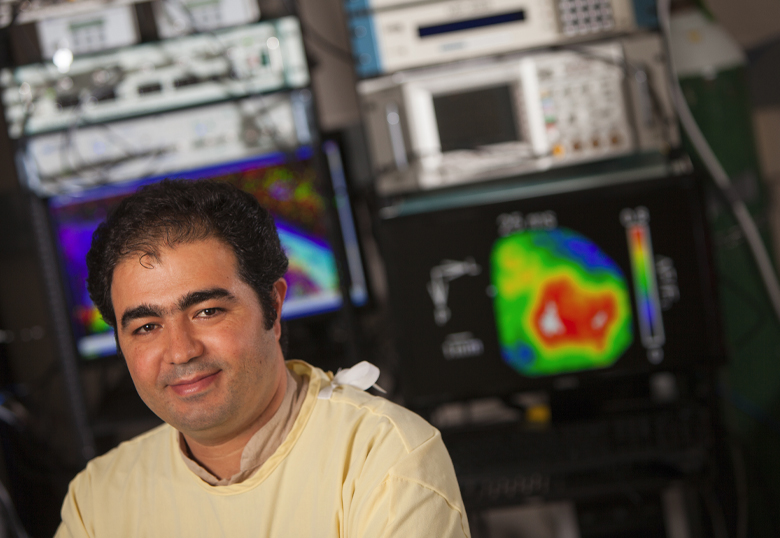Researchers at the University of Lethbridge will delve further into the basic markers associated with the development of Alzheimer’s disease (AD) thanks to two funding grants.
Dr. Majid Mohajerani, principal investigator, and co-investigators, Drs. Robert Sutherland and Bryan Kolb from the University of Lethbridge, and Dr. David Westaway from the University of Alberta, will primarily use mouse models to understand the underlying biological processes associated with the development of AD.

Two abnormal proteins called plaques and tangles are prime suspects in damaging and killing nerve cells in AD. Both are fragments of proteins that get misfolded in AD, but researchers are still unclear where in the brain plaques and tangles emerge and how they contribute to changing the properties of neuronal circuits in the brain and lead to the progression of cognitive impairments.
In the first funded project, Mohajerani, Sutherland and Westaway will investigate these questions to figure out what neural circuits are responsible for spatial navigation deficits in AD, one of its earliest symptoms. These deficits are evident when people lose their way in familiar and unfamiliar places, get lost while driving or wander away from home.
“It is important to understand these primary brain alterations as they provide a target for early-stage therapeutic interventions before the occurrence of significant and irreversible brain damage,” says Sutherland.

Recent research publications by Mohajerani, Kolb and post-doctoral fellow Dr. Zahra Jafari, showed an association between long-term traffic noise exposure and cognitive decline in healthy animals. In their studies on transgenic mice which develop various aspects of AD, animals were exposed to real traffic noise at a level similar to a typical urban area. The offspring of these mice developed impairments in learning, memory and cognitive performance and earlier aggregation of amyloid-beta plaques, which are precursors of AD.
“Our findings raise questions around the neural mechanisms related to the early development of AD due to traffic noise,” says Kolb. “Further exploration in other animal models is needed, as is looking at the adverse impacts of air pollution, which has been linked to cognitive decline and dementia in humans.”
Recent research findings have indicated that environmental exposures, including air pollution from traffic sources, are consistently associated with cardiovascular and respiratory diseases, death from any cause and with cognitive impairment and early dementia.

“We need to determine if there’s any way of preventing or reducing the adverse effects of noise stress on the brain,” says Mohajerani. “Programs to reduce traffic noise are essential to mitigate the development of various diseases and cognitive impairment in human populations. Studies that consider other sources of noise over the life course are also needed.”
“Among the various aspects of the effects of noise on the brain and behaviour, the effect of traffic noise on neurodevelopment, the neurotransmitter system and the immune system has been less studied,” says Jafari. “Current evidence emphasizes the need for neuroimaging and functional brain studies to clarify the role of chronic noise exposure in the development of brain changes that lead to dementia in humans.”
According to the Alzheimer Society of Canada, more than half a million people were living with dementia in Canada in 2018. With about 25,000 new cases diagnosed every year, the number of people with dementia is expected to rise to around a million people by 2031.Possible or established risk factors for cognitive impairment include age, family history, genes, diabetes, hearing loss, hypertension, and lifestyle factors such as smoking and alcohol consumption.
“We are very grateful to the Alzheimer Society of Alberta and Northwest Territories and Alberta Prion Research Institute for these two grants that will enable us to gain an understanding of the mechanisms at work in the earliest stages of AD,” says Mohajerani.
